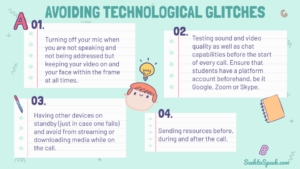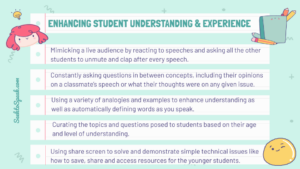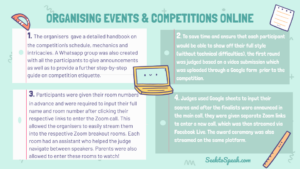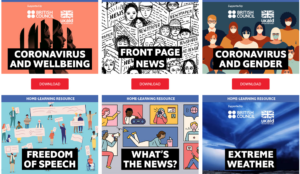As a soft skill, Public Speaking is learned through curated social interactions and experiences — thus it is difficult to teach via textbooks or in a regular school setting. So when the coronavirus hit and education providers moved online, I had to really change the way I approached public speaking lessons.
The challenge was twofold: it was not only important to adapt to the new platform, but also maintain the quality of my classes. These last two months have taught me quite a few things about teaching soft skills online.
‘Hello? Can you hear me?’
The first online class was a virtual nightmare. Most of my students are very young and needed adult supervision to set up the call, which caused a lot of issues — especially if the parents were technologically challenged themselves.
Even when the students managed to log onto the call successfully, there were other technical issues like not being able to see or hear me or the other way around — leading to a lot of interruptions. Other annoying audio issues like not turning the mic off or being in a noisy room also disrupted the class.
Things in the background became distracting as well. I’ve seen parents take their shirts off, walk in their towels, and also burp loudly. No teacher should be that close to a parent’s anatomy!
Multiple technical issues and questions really dragged the class and frustrated both teaching and learning efforts, which led to a few students dropping out of the class. However, as with anything new, there will always be teething issues.
I found that it was very important to establish class rules to ensure the smooth delivery of lessons. These class rules include:

After 3 weeks of being on a consistent platform, I’m happy to report that most of the technical issues have been solved. But there were other side effects of online lessons that I didn’t expect.
What effect did online lessons have on the students?
When I taught in a physical class, I had a lot of outspoken students. You know the type: those who always spoke up to ask questions and share anecdotes or jokes, making the class lively and interactive. In an online environment, however, this was almost non-existent because they couldn’t do it naturally or in real-time. They would have to take extra steps to unmute themselves, interrupt the class, and speak their mind — all of which suddenly seemed like too much effort with no real returns (since they would likely not get any laughs out of it!).
On the other hand, I noticed that my typically shy students became a lot braver during online classes. Since they didn’t have the scrutiny of a whole class watching, they became more confident and delivered their speeches better.
In contrast, students who were typically outspoken in class fared worse. It’s as if these students thrived on the energy of the audience. Their speeches now seem repetitive and awkward. Previously, they would hear laughter and immediate feedback, which I suspect emboldens them to be more expressive. However, that kind of energy is now lost.
I also noticed that it was harder for younger students (below 10 years old) to follow the class instructions without extra help. Even simple things like opening a link or analysing a document required additional parental assistance.
What’s worse was that these younger students go through the class not really following but refusing to say anything because it’s easier to just sit still. I noticed this when I asked them questions and only had blank stares as an answer. Follow-up questions revealed the extent of their lack of understanding and I had to quickly reframe the way I taught.

Can public speaking competitions move online?
The short answer: yes! The slightly longer answer: it was always possible, and it didn’t need a pandemic to do so.
I recently had the privilege of being on the core judging panel for Malaysia’s Public Speaking Open 2020 (MPSO) hosted by the Malaysian Institute of Debate and Public Speaking (MIDP). I was surprised to find that this wasn’t MIDP’s first online competition as they had previously conducted several debate competitions on 3 different platforms (Zoom, Discord & Teamviewer) with participants from all across the globe. So I was very curious as to how this online competition would work.
MPSO attracted 75 participants of various ages, experiences, and backgrounds. On the actual competition day, participants were asked to enter a Zoom call link and later streamed into their virtual rooms. In their respective rooms, participants would receive their impromptu topics and deliver their speeches.
Once that was done, judges would key in their scores and be rotated to other rooms. The finalists were announced after 1 video submission, 2 preliminary rounds, and the tabulation of scores through Google sheets.
The grand final was streamed through Facebook Live. More than 2,000 people tuned in to watch, and the participants gave amazing speeches while their supporters cheered them on in the comment section.
After a brief deliberation, we announced the winners through a virtual award ceremony (also streamed on Facebook Live). Every finalist got cash prizes wired to them and every participant was emailed with certificates of participation. I even gave feedback through Whatsapp messages and calls! It all felt so modern and high tech!
I was thoroughly impressed — not only by the participants’ stellar speeches, but also at the ease of running virtual competitions. It was really a wonderful and illuminating experience. I was also amazed at how people found innovative ways to learn, stay connected, and progress despite all the restrictions of the movement control order. While I did not personally organise the event, I noticed a few vital components that ensured the competition could run smoothly:

